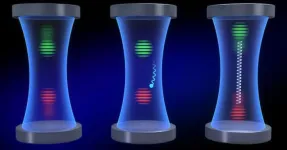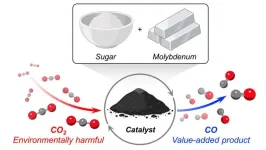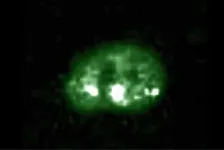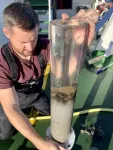(Press-News.org) Early care and education (ECE) programs – like Pre-Kindergarten (Pre-K) and Head Start – are widely regarded as effective public investments for reducing income- and race-based achievement gaps and helping children succeed in school with impacts extending well into adulthood. However, in a Policy Forum, Margaret Burchinal and colleagues present recent evidence suggesting that preschool impacts are not unequivocally positive and the science on the overall outcomes of these programs remains unsettled. According to Burchinal et al., more rigorous research is needed to understand how to design early education programs that produce long-term positive outcomes, especially for children from disadvantaged backgrounds. “We urge both the policy and research communities to take seriously the most rigorous evidence, regardless of the valence of the findings, to advance our models of development and intervention,” write the authors. Here, Burchinal et al. provide a review of recent, rigorous randomized controlled studies that evaluated Head Start and local public Pre-K programs. One study, which assessed the Tennessee Voluntary Pre-K program (TNVPK) – a large state-funded pre-k program that enrolls roughly 25% of the state’s 4-year-olds – revealed negative impacts on academic and behavioral outcomes during elementary and middle school. Another, the Head Start Impact Study, provided discouraging long-term results, finding almost no evidence of above-chance advantages for student attendees. Although the authors note that there is evidence of the potential for today’s ECE programs to accomplish their goals, the review indicates that some of today’s publicly funded ECE programs do not showing lasting positive effects for the students who participate in them, a conclusion that contrasts with the assumption that these programs always provide positive and beneficial outcomes. Burchinal et al. provide insight into why earlier ECE programs appeared to be more successful than today’s and highlight critical gaps in our understanding that must be addressed in order to develop programs and interventions that produce long-term positive outcomes for today’s children.
END
*FREE* The effectiveness of early childhood education programs is scientifically uncertain
2024-05-02
ELSE PRESS RELEASES FROM THIS DATE:
Twisting and binding matter waves with photons in a cavity
2024-05-02
Precisely measuring the energy states of individual atoms has been a historical challenge for physicists due to atomic recoil. When an atom interacts with a photon, the atom “recoils” in the opposite direction, making it difficult to measure the position and momentum of the atom precisely. This recoil can have big implications for quantum sensing, which detects minute changes in parameters, for example, using changes in gravitational waves to determine the shape of the Earth or even detect dark matter.
In a new paper published in the Science, JILA and NIST Fellows Ana Maria Rey and James Thompson, ...
Sugar-based catalyst upcycles carbon dioxide
2024-05-02
A new catalyst made from an inexpensive, abundant metal and common table sugar has the power to destroy carbon dioxide (CO2) gas.
In a new Northwestern University study, the catalyst successfully converted CO2 into carbon monoxide (CO), an important building block to produce a variety of useful chemicals. When the reaction occurs in the presence of hydrogen, for example, CO2 and hydrogen transform into synthesis gas (or syngas), a highly valuable precursor to producing fuels that can potentially replace gasoline.
With recent advances in carbon capture technologies, post-combustion carbon capture is ...
Deeper understanding of malaria parasite sexual development unlocks opportunities to block disease spread
2024-05-02
For the first time, the developmental stages of the deadliest human malaria parasite have been mapped in high resolution, allowing researchers to understand this ever-adapting adversary in more detail than previously possible.
The study, published today (2 May) in Science, details the critical developmental stages of the malaria parasite, Plasmodium falciparum, using single-cell RNA sequencing. This gives detailed information on the life stages of this parasite as it matures, changing from an asexual state to a sexual state, which is necessary before the parasite can be transmitted to mosquitoes.
The research from ...
Breaking ground: Investigating the long-term effects of early childhood education
2024-05-02
EMBARGOED TO 2:00 P.M. ET May 2, 2024
Contact: Patricia Lamiell; patricia.lamiell@tc.columbia.edu or Ari Morgan; teacherscollege@skdknick.com
Breaking Ground: Investigating the Long-Term Effects of
Early Childhood Education
New review from Teachers College, Columbia University, University of Virginia, University of California-Irvine, and University of Delaware Reveals Varied Impact of Preschool Programs on Long-Term School Success.
EDITOR’S NOTE: The EMBARGOED ...
Synchronization between the central circadian clock and the circadian clocks of tissues preserves their functioning and prevents ageing
2024-05-02
Barcelona, 2 May 2024 - Discovered in the 1970s, circadian clocks are essential for the regulation of biological time in most cells in the human body. These internal mechanisms adjust biological processes to a 24-hour cycle, allowing the synchronisation of cellular functions with daily variations in the environment. Circadian rhythms, which are coordinated by a central clock in the brain that communicates with clocks in different peripheral tissues, influence many functions, from our sleep patterns to our ability to metabolise food.
A team led by Dr. Salvador Aznar Benitah, an ICREA researcher ...
Physicists arrange atoms in extremely close proximity
2024-05-02
Proximity is key for many quantum phenomena, as interactions between atoms are stronger when the particles are close. In many quantum simulators, scientists arrange atoms as close together as possible to explore exotic states of matter and build new quantum materials.
They typically do this by cooling the atoms to a stand-still, then using laser light to position the particles as close as 500 nanometers apart — a limit that is set by the wavelength of light. Now, MIT physicists have developed a technique that allows them to arrange atoms in much closer proximity, down to a mere 50 nanometers. For context, a red blood cell ...
Scientists track ‘doubling’ in origin of cancer cells
2024-05-02
Working with human breast and lung cells, Johns Hopkins Medicine scientists say they have charted a molecular pathway that can lure cells down a hazardous path of duplicating their genome too many times, a hallmark of cancer cells.
The findings, published May 3 in Science, reveal what goes wrong when a group of molecules and enzymes trigger and regulate what’s known as the “cell cycle,” the repetitive process of making new cells out of the cells’ genetic material.
The findings could be used to develop therapies that interrupt snags in the cell cycle, ...
Human activity is causing toxic thallium to enter the Baltic sea, according to new study
2024-05-02
Woods Hole, Mass. (May 2, 2024) -- Human activities account for a substantial amount - anywhere from 20% to more than 60% - of toxic thallium that has entered the Baltic Sea over the past 80 years, according to new research by scientists affiliated with the Woods Hole Oceanographic Institution (WHOI) and other institutions.
Currently, the amount of thallium (element symbol TI), which is considered the most toxic metal for mammals, remains low in Baltic seawater. However, the research suggests that the amount of thallium could increase due to further anthropogenic, or human induced, activities, or due to natural or human re-oxygenation of the Baltic that could make the sea ...
NREL proof of concept shows path to easier recycling of solar modules
2024-05-02
The use of femtosecond lasers to form glass-to-glass welds for solar modules would make the panels easier to recycle, according to a proof-of-concept study conducted by researchers at the U.S. Department of Energy’s National Renewable Energy Laboratory (NREL).
The welds would eliminate the need for plastic polymer sheets that are now laminated into solar modules but make recycling more difficult. At the end of their useful lifespan, the modules made with the laser welds can be shattered. The glass and metal wires running through the solar cells can be easily recycled and the silicon ...
NREL invites robots to help make wind turbine blades
2024-05-02
Researchers at the U.S. Department of Energy’s National Renewable Energy Laboratory (NREL) have successfully leveraged robotic assistance in the manufacture of wind turbine blades, allowing for the elimination of difficult working conditions for humans and the potential to improve the consistency of the product.
Although robots have been used by the wind energy industry to paint and polish blades, automation has not been widely adopted. Research at the laboratory demonstrates the ability of a robot to trim, grind, and sand blades. Those necessary steps occur after the two sides of the blade are made using a mold ...



